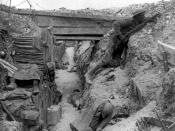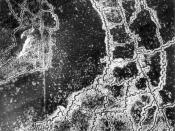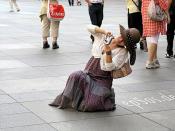The aim of this study is to critically examine different types of sources in order to assess in what ways and how useful they are in helping to build some understanding of how British soldiers were affected by the conditions and the nature of warfare on the Western Front (1914-18). In general terms, different types of sources have proved to be useful for this purpose, despite the fact that some of them do not represent the reality. Some photographs, for example, appear to be staged in an attempt to reflect a positive perspective of the life in the trenches. However, it is important to note that the way one interprets things is subjective and, therefore, different sources might result in different interpretation. Different types of source can form a rich base to record and understanding history.
Firstly, Source A1 photograph 2 is considered a primary source since it seems that a person who was there at the time of the war took it.
It is not known who the author of this source is. The exact date at witch it was taken is also unknown. It is expected that the audience of this source was not the general public. This is because of the DORA act, which meant that after 1916, all photos shown in newspapers or posters had to be censored. This photo does not exactly show the brighter side of life in the trenches because the soldiers seem extremely tired or bored. However, it might well be that showing this side would not have been allowed, because it would give a bad impression of the war and, hence, this would bring down morale back at home. This source does not reflect a very positive impression on what life in the trenches was like. This photo shows three men...


